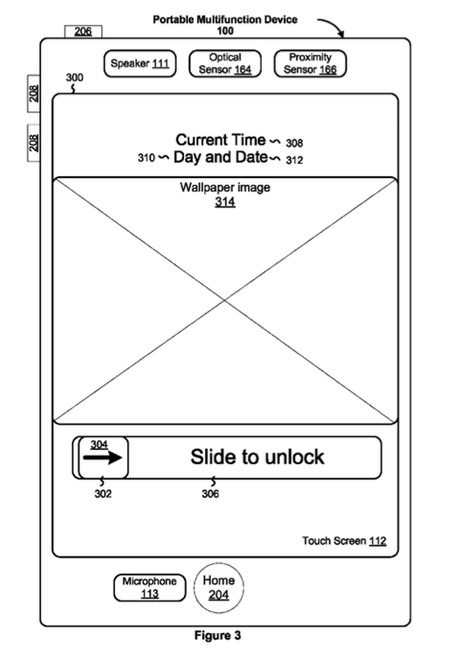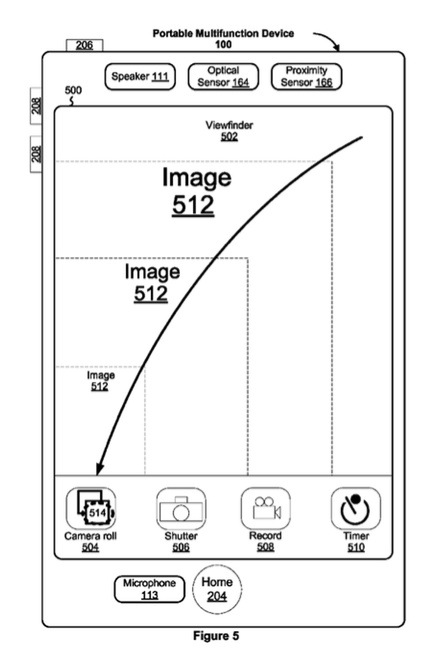An Apple patent (number 8305355) for a portable electronic device for photo management has appeared at the U.S. Patent & Trademark Office.
A portable electronic device with a touch screen display for photo management is disclosed. One aspect of the invention involves a computer-implemented method in which the portable electronic device displays an array of thumbnail images corresponding to a set of photographic images. The device replaces the displayed array of thumbnail images with a user-selected photographic image upon detecting a user contact with a corresponding thumbnail image in the array.
The user-selected photographic image is displayed at a larger scale than the corresponding thumbnail image. The portable device displays a different photographic image in replacement of the user-selected photographic image in accordance with a scrolling gesture. The scrolling gesture comprises a substantially horizontal movement of user contact with the touch screen display.
Here's Apple's background on the invention: "As portable electronic devices become more compact and capable of performing functions, it has become a significant challenge to design a user interface that allows users to easily interact with such a multifunction device. This challenge is more significant for handheld portable electronic devices, which have much smaller screens than desktop or laptop computers. This situation is unfortunate because a user interface is the gateway through which a user receives information and a device receives user actions or behaviors, including user attempts to access the portable electronic device's features, tools, and functions.
"Some portable devices (e.g., mobile telephones, sometimes called mobile phones, cell phones, cellular telephones, and the like) have resorted to adding more push buttons, increasing the density of push buttons, overloading the functions of push buttons, or using complex menu systems to allow a user to access, store, and manipulate data. These approaches often result in complicated key sequences and menu hierarchies that must be memorized by the user.
"Many conventional user interfaces, such as those that include physical push buttons, are also inflexible because a physical push button may prevent a user interface from being configured and/or adapted by either an application running on the portable electronic device or by users. When coupled with the time consuming requirement to memorize multiple key sequences and menu hierarchies, and the difficulty in activating a desired push button, such inflexibility is frustrating to most users.
"For example, cell phones with a built-in digital camera have been on the market for some time. But existing cell phones are difficult to use for even basic photo-related operations such as displaying, deleting and sending a photo because of limitations with the cell phones' user interface. Accordingly, there is a need for portable multifunction devices with more transparent and intuitive user interfaces for photo management."
The inventors are Michael Matas, Greg Christie, Paul D. Marcos, Scott Forstall, Marcel Van Os, Bas Ording and Imran Chaudhri.














